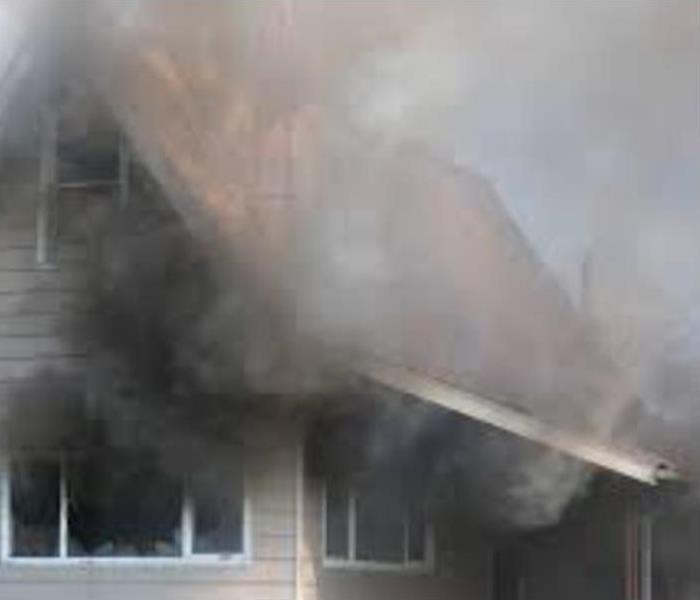Smoke Damage Protocol
9/1/2022 (Permalink)
Understand material damage. Why smoke damage? Soot exposure will sink itself into the fibers and surfaces of your structure. How to recover contents after a wildfire.
Fire or smoke damage is one of the worst types of structural damage. Smoke damage is both of smoke and soot. It can destroy prized belongings and ruin the home’s living environment. Fire can blaze instantly without warning and rage on, destroying everything in its path. It can damage any structure within the area. The flames and heat in the fire, along with smoke, can badly damage your property. This is because most combustible items like carpets, wood products and fabrics do not burn completely. They have considerable chemical levels that become dangerous due to off-gassing.
Smoke Related Health Risks
Smoke particles put your health at risk because of its toxicity levels. Microscopic particles are suspended in air and later settle as soot. The soot and particles that settle on clothes and furnishings severely irritate the skin. Breathing in these toxins over time will lead to health complications. It will affect the respiratory system making breathing difficult. It causes coughing, nausea, and sleepiness. It can lead to death resulting from increased carbon monoxide in the lungs that hinder oxygen circulation in the body. It can also cause irreversible brain damage.
Smoke damage may not seem obvious, it is still a threat to your health. Focus on your safety by having SERVPRO of Streamwood, Bartlett, West chicago, And Warrenville cleanup and decontaminate your property professionally.
Toxic Building Materials Post Fire
In addition to unsightly damage and unpleasant odors, fire and smoke leave behind residues that can pose serious health risks. Building materials can release toxic chemicals when burned, and those chemicals can contaminate surrounding materials. It’s important to make sure any of the below damaged and affected materials are cleaned or removed:
- Plastics
- Carpets
- Upholstery
- Wood products
- Insulation
- Wool
- Foams
- All materials containing asbestos or lead
Toxic Chemicals Post Fire
After a fire, odors and discoloration can indicate that the environment has likely been contaminated with hazardous chemicals that were released during the fire. These chemicals pose significant health risks. Products that can release toxins when burned are common building materials and household items.
PVC (Polyvinyl chloride)
PVC is the world’s third-most widely produced synthetic plastic polymer— over 40 million tons are produced each year. It’s used in flooring, plumbing, roofing, siding, protective clothing, and more. When burned, PVC releases a number of chemicals, all of which can be harmful to humans, including:
- Hydrogen chloride
- dioxin chloromethane
- Halocarbons
- Phosgene
- Bromomethane
- Carbon Materials
Since carbon building materials are readily available and used in abundance, they can pose a serious health risk after a fire if not properly restored or removed. When burned, these materials can release:
- Ammonia
- Nitrogen oxide
- Tar
- Hydrogen
- Carbon monoxide





 24/7 Emergency Service
24/7 Emergency Service
